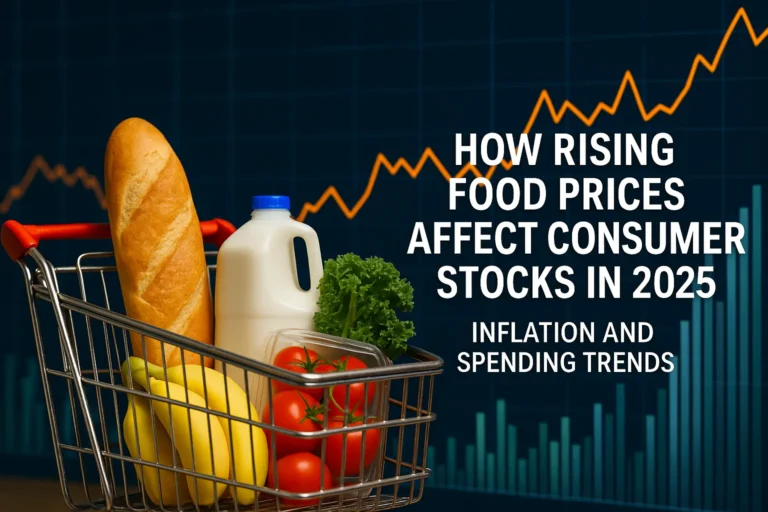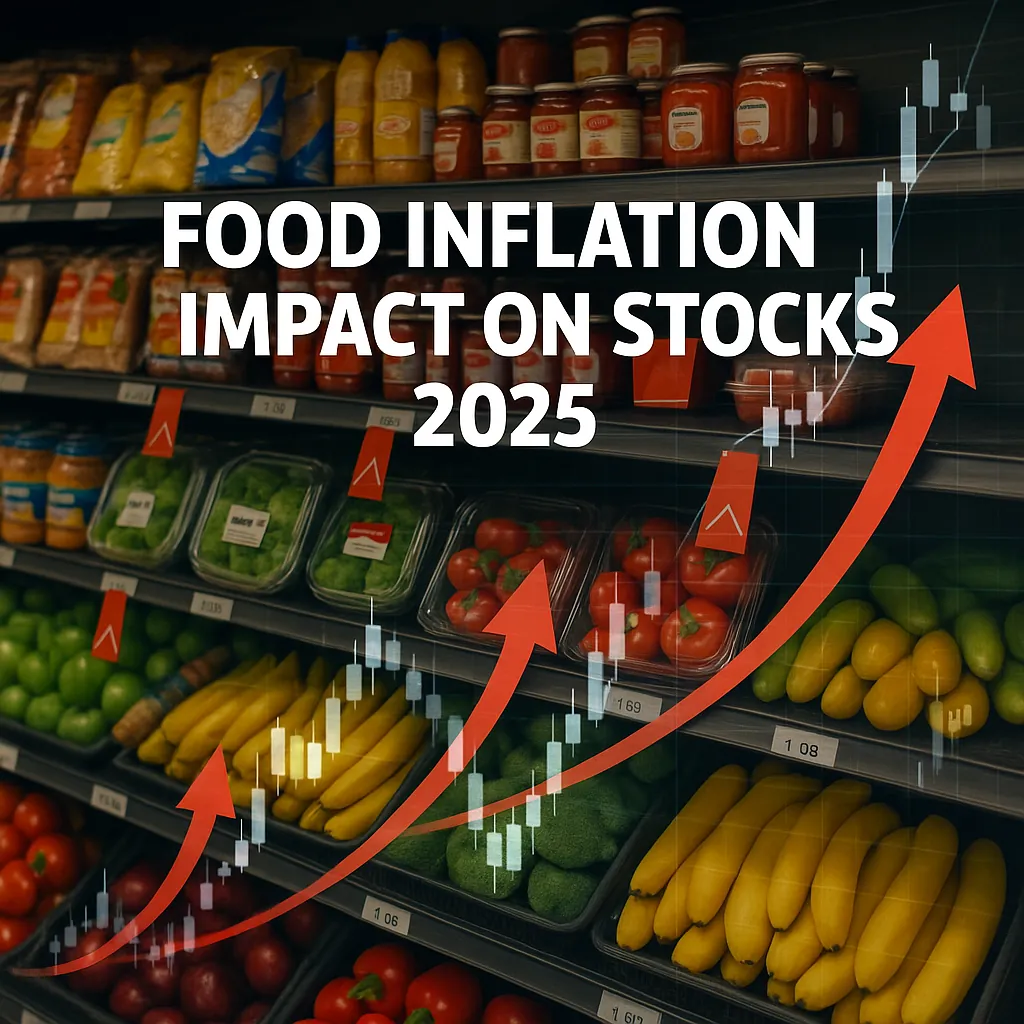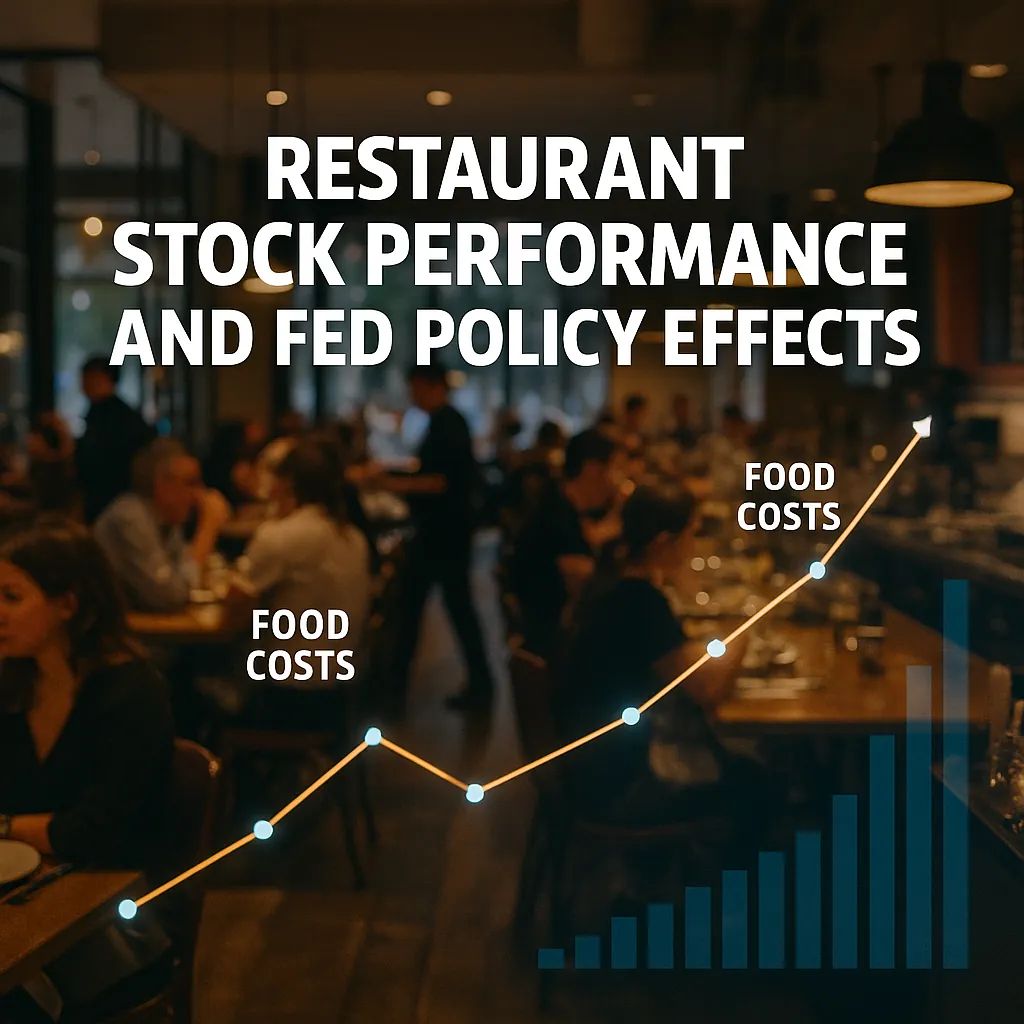
Why Food Prices Keep Rising — and What It Means for Consumer Stocks
Why Food Prices Keep Rising — and What It Means for Consumer Stocks
Primary focus: how rising food prices affect consumer stocks in 2025
If your grocery bill keeps creeping higher each month, you’re not imagining it—and that’s prompting traders to ask how rising food prices affect consumer stocks in 2025. From packaged goods to quick-service chains, companies are still battling the aftershocks of higher commodities, shipping bottlenecks, and wage inflation. This persistent inflation cycle is reshaping margins, valuations, and sector leadership across the consumer landscape.
Investors analyzing the food inflation impact on stocks 2025 see a clear divide: grocery giants with private-label strength and efficient logistics are weathering the storm better than discretionary restaurant brands. As inflation and Fed policy effects ripple through the markets, consumer spending habits continue to pivot—favoring essentials over luxuries. We’ll break down which companies are adapting best, what the grocery chain stocks analysis reveals, and how restaurant stock performance trends might evolve as 2025 unfolds.
Before diving deeper, brush up on core market foundations like stock market lingo, trading strategies for beginners, and dividend-based income to connect consumer-sector dynamics with long-term investing decisions.
Market Overview: Food Inflation, Spending Shifts, and Grocery Chain Stocks
To gauge how rising food prices affect consumer stocks in 2025, start with the inflation backdrop and shopper behavior. The BLS CPI data shows persistent grocery inflation relative to pre-2020 norms, pushing households toward private labels and discount formats—core drivers in our grocery chain stocks analysis. These consumer spending trends 2025 support traffic for value leaders and club stores while pressuring mid-tier concepts. For stock pickers, we focus on pricing power, scale efficiencies, and inventory discipline amid ongoing inflation and Fed policy effects on valuations.
- Value migration: Trade-down and pantry-stocking favor high-volume grocers with robust private-label programs.
- Mix & elasticity: Price hikes cushion margins but risk volume softness; watch unit trends and basket mix.
- Operating leverage: Scale and supply-chain tech help offset shrink, logistics, and labor costs.
Chart commentary: As food costs climbed, large caps with traffic resilience and private-label penetration generally outperformed smaller peers. Watch gross margin progression versus unit trends; if elasticity bites, comps slow even as dollar sales hold. This framing links directly to the broader food inflation impact on stocks 2025 narrative.
Internal primer: stock trading strategies for beginners | Inflation tracker: BLS Consumer Price Index
We’ll next compare staples and grocers with restaurant stock performance as menu pricing, traffic elasticity, and wage trends create a different—but related—margin story for 2025.
Deep Dive: Pricing Power, Private Labels, and Basket Mix
A core driver of food inflation impact on stocks 2025 is the tug-of-war between pricing power and volume elasticity. Branded manufacturers raised list prices to offset inputs (grains, proteins, packaging, freight, and wages), while retailers leaned on private-label expansion to defend traffic. That shift reshapes category share and gross margins, especially where value formats capture larger baskets. As consumer spending trends 2025 tilt toward bulk purchasing and at-home meals, winners tend to pair everyday low prices with disciplined inventory turns and shrink reduction—key elements in rigorous grocery chain stocks analysis.
For investors, the screening checklist is straightforward: (1) sustained pricing power without steep unit erosion, (2) mix improvement via private label and high-velocity essentials, (3) expense leverage from supply-chain tech, and (4) balance sheets that can weather higher discount rates as inflation and Fed policy effects flow through valuations. This framework also sets up a like-for-like comparison with restaurant stock performance, where traffic sensitivity and wage trends can dominate the P&L.

Helpful refreshers as you evaluate category leaders: stock market lingo, evergreen trading rules, and inflation basics.
Turn Prices into Positions
Use our guides on beginner trading strategies and dividend income to translate how rising food prices affect consumer stocks in 2025 into a disciplined watchlist.
Restaurant Stock Performance and Fed Policy Effects
Inflation doesn’t stop at the grocery aisle—it flows directly into restaurants’ cost structures. In analyzing restaurant stock performance within the larger theme of how rising food prices affect consumer stocks in 2025, the critical question is how menu pricing interacts with traffic trends. Operators can protect short-term margins through menu price hikes, but beyond a threshold, customer elasticity curbs volume. That dynamic has separated quick-service chains (which benefit from convenience and lower price points) from casual-dining peers struggling with wage and ingredient pressures.
Meanwhile, inflation and Fed policy effects ripple across valuation multiples. Higher interest rates lift discount rates and depress forward P/Es, especially for high-growth restaurant concepts dependent on consumer credit or aggressive unit expansion. Companies with strong cash flow, healthy franchising models, and price discipline have proven more resilient. These same conditions highlight the broader food inflation impact on stocks 2025—pricing flexibility is a moat when cost inputs remain volatile.
Chart commentary: Restaurant stocks such as McDonald’s (MCD) and Starbucks (SBUX) illustrate this pattern. Price leadership supported same-store sales early in the cycle, but cost inflation and slower discretionary demand now test traffic durability. Monitoring menu price elasticity and same-store comps will be central to 2025 earnings estimates.
Related research: Bloomberg Consumer Markets, CNBC Food & Beverage, and capital gains tax guide.
As the Federal Reserve balances inflation control against growth risks, investors tracking consumer spending trends 2025 will see opportunities across both defensive grocery names and cyclical restaurant operators. The next section breaks down forecasts, valuations, and long-term positioning for each subsector.
Insights & Forecast: Positioning for 2025 Amid Persistent Food Inflation
Here’s how we translate the macro into a portfolio playbook. We anchor on category leadership, balance-sheet resilience, and execution against traffic and mix. With consumer spending trends 2025 still skewing to value, our tilt favors operators with pricing power, private-label strength, and supply-chain efficiency. We also consider duration risk as inflation and Fed policy effects filter into valuations.
Grocery & Staples — Base Case
- Low-single-digit price/mix growth; volumes stabilize as comps ease.
- Private label gains share; shrink and logistics remain watchpoints.
- Screen for FCF conversion & inventory discipline (grocery chain stocks analysis).
Restaurants — Split Outcome
- QSR: resilient traffic; modest elasticity offset by throughput and value deals.
- Casual dining: higher sensitivity to checks; wage & food costs cap margin recovery.
- Focus on franchising mix, unit economics, and restaurant stock performance catalysts.
| Subsector | Key Drivers | Watch |
|---|---|---|
| Grocery Chains | Private label, shrink mgmt., traffic elasticity | Gross margin vs. unit trends; value-tier mix |
| Staples Producers | Input costs, pricing power, promo intensity | Price gaps to private label; shelf resets |
| Restaurants (QSR) | Check growth, value platforms, throughput | Traffic vs. menu price; franchisee health |
| Restaurants (Casual) | Wage & food cost leverage, comps sensitivity | Reservation trends; promo cadence; labor mix |

Build a disciplined plan while this theme plays out: revisit our evergreen stock trading rules and confirm how position sizing and risk controls adapt to persistent food inflation.
FAQs, Conclusion & Next Steps
Why are food prices still rising in 2025?
Which consumer stocks can benefit from higher food prices?
How do inflation and Fed policy affect valuations?
Are grocery chain stocks or restaurant stocks safer in 2025?
What indicators should I track each month?
The inflation cycle has changed how households shop and how companies price. For investors, the implications are practical: prioritize category leaders with the operational muscle to manage shrink and labor, the pricing discipline to protect share, and the balance sheets to navigate a higher-for-longer rate backdrop. In staples and grocery, private-label penetration, inventory turns, and gross margin cadence are the heartbeat; in restaurants, menu price elasticity, traffic durability, and unit economics drive the story. Together, these factors explain how rising food prices affect consumer stocks in 2025 and where risk-adjusted opportunities may emerge as comps normalize.
Next steps: formalize a rules-based plan before the next CPI print. Define entries and exits, size positions with humility, and pressure-test scenarios (strong/weak comps, persistent vs. easing inflation). If you’re newer to markets, start with core primers on stock market lingo, beginner strategies, and income via dividends. Options can complement—but not replace—discipline; review pricing factors before layering complex structures.
Final thought: the objective isn’t to predict each data point—it’s to prepare. Use evidence, respect risk, and keep a steady cadence of review as consumer behavior evolves through the year.
Stay Ahead of the Next CPI Print
Get timely alerts, charts, and trade ideas aligned to food inflation themes—plus practical rules for entries, exits, and risk.
Revisit your plan with our evergreen stock trading rules and bookmark the BLS CPI calendar for next release dates.

Pauline Lei
Market analyst and lead writer at TradeStockAlerts.com. Pauline tracks consumer staples, grocery chains, and restaurants—translating inflation prints, comps, and margins into clear, rules-based strategies for everyday investors navigating food-price volatility.